Welcome to our blog on Large White Pig Facts! If you’re curious about the fascinating world of pig farming and want to learn more about the Large White pig breed, you’ve come to the right place. This article explores the origin, size, physical characteristics, pros, and cons of raising Large White pigs. From their humble beginnings to their unique traits, we’ll delve into everything you need to know about these remarkable creatures.
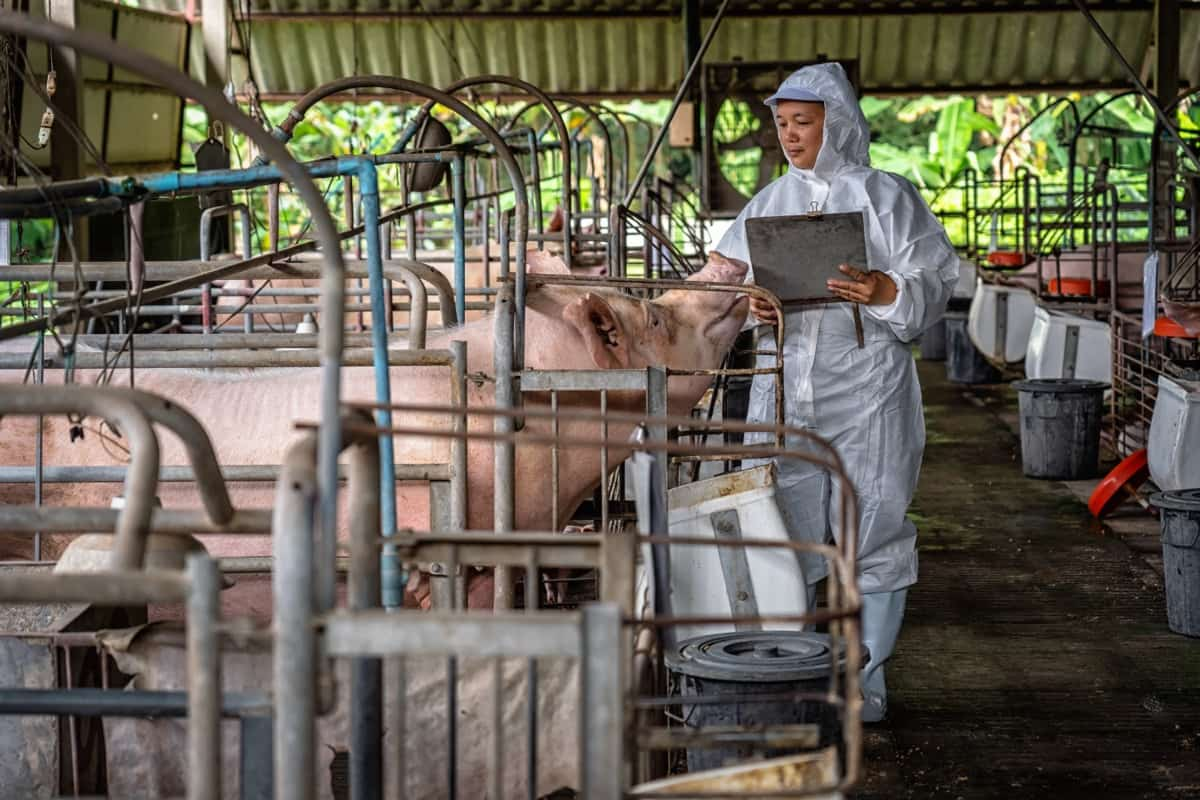
Large White Pig Facts
Introduction to the Large White Pig Breed
The Large White, originating from Yorkshire, England, is a British domestic pig breed. It has become widely recognized for its suitability in outdoor farming systems and ability to thrive in various conditions. Through decades of meticulous performance recording and selective breeding, the Large White has surpassed many other rare breeds in prolificacy.
On average, each litter consists of approximately 11-12 piglets, and the breed’s sows are known for their milky nature, exhibiting strong maternal instincts. One of the breed’s standout characteristics is its remarkable F.C.R. (feed conversion ratio), which efficiently converts feed into weight gain. Large White pigs can achieve high D.L.W.G. (daily live weight gain), making them an ideal choice for intensive farming systems.
With their comprehensive management practices and data recording, these systems allow the breed to thrive and reach its full potential. Physically, the Large White is a sizeable breed with a lean physique. Sows typically weigh between 260-300kg, while boars range from 350-380kg. Notably, these pigs possess distinct prick ears, adding to their visual appeal.
In case you missed it: Tamworth Pig Facts: Origin, Size, Physical Characteristics, Pros, and Cons
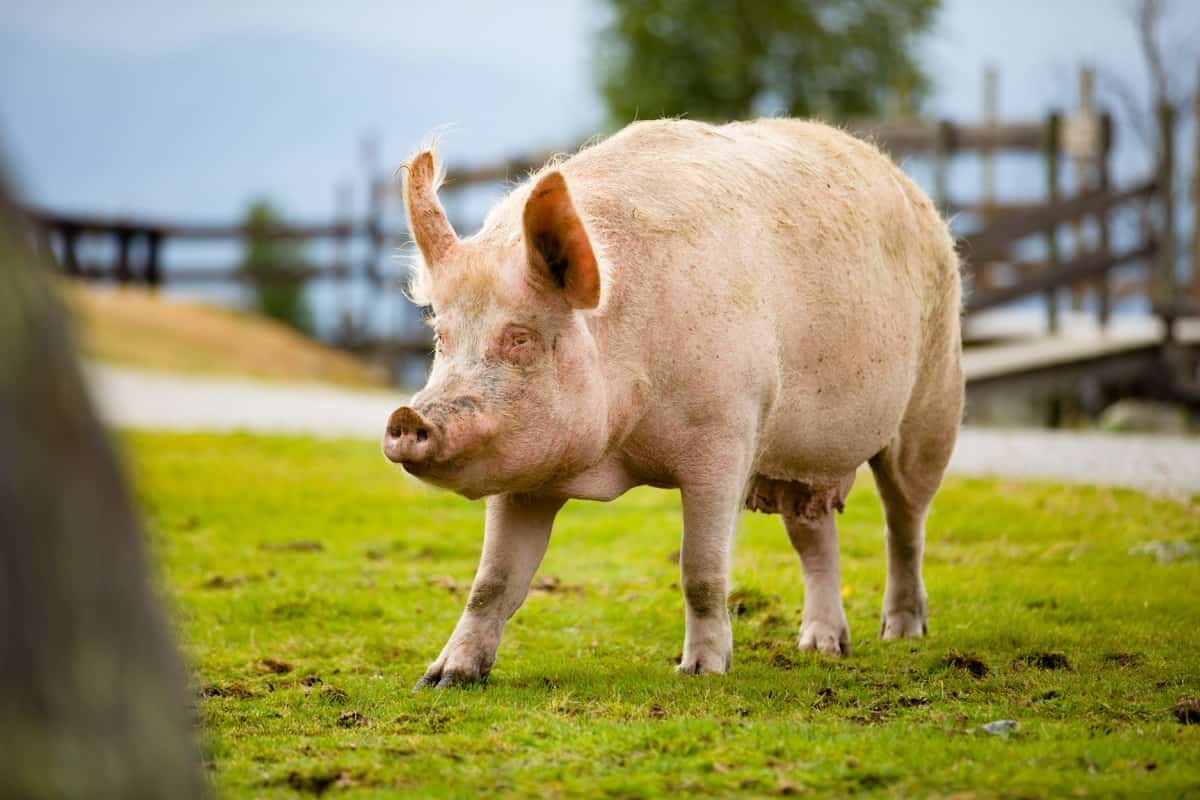
Large White Pig Origin and History
The Large White pig, also known as Yorkshire, originated in Yorkshire, United Kingdom, during the 19th century. It was developed from local white breeds and had minimal Asian influence compared to other British pig breeds. 1884 the first herdbook for the Large White was published, sparking widespread interest among breeders. By the end of the 19th century, the breed gained significant popularity, and enterprising breeders started exporting Large White stock to various parts of the world.
As the 20th century unfolded, the Large White pig continued to prominence. The 1955 Howitt Report aimed to establish the foundation of the U.K. pig farming industry and recommended the Large White, alongside Landrace and Welsh breeds, as key contributors. The breed’s reputation further soared due to advancements in performance recording and the specialization of the global pig industry. It was recognized as “The World’s Favorite Breed,” cementing its position as a highly sought-after pig breed internationally.
Large White Pig Size and Weight
The Large White pig, also known as English Large White or Yorkshire, is a breed that exhibits a large size. Boars of this breed typically weigh between 350-380 kg, while sows have an average weight ranging from 260-300 kg. This substantial size contributes to their desirability for various purposes. Large White pigs are renowned for their ruggedness, hardiness, and active nature, making them well-suited to withstand fluctuations in climate and thrive in different environmental conditions. They are highly adaptable and can be raised in intensive, extensive pig farming systems.
Physical Characteristics of Large White Pigs
- Head: Moderately long with a slightly dished face and broad snout.
- Neck: Fine, long, and evenly full, extending to the shoulders with deep and wide chests.
- Back: Long, level, and wide.
- Weight: Mature boars weigh between 300 kg and 450 kg, while mature sows weigh between 250 kg and 350 kg.
- Carcass Quality: Large White pigs exhibit good carcass quality.
- Coat/Skin Color: The breed has a completely white coat or skin color.
- Prolific and Efficient: Large White pigs are highly prolific and efficient feed converters.
- Facial Features: Medium-length head with a relatively wide and concave appearance, a slightly long snout, raised jaw, small eyes, and medium erect ears with a slight forward inclination.
- Muscular Conformation: Large White pigs have a muscular build with a well-developed neck that slopes along the upper line and sides.
- Legs: Well-developed, straight legs with strong joints and medium hooves provide excellent support for the animal’s movements.
In case you missed it: Kolbroek Pig Facts: Origin, Size, Physical Characteristics, Pros, and Cons
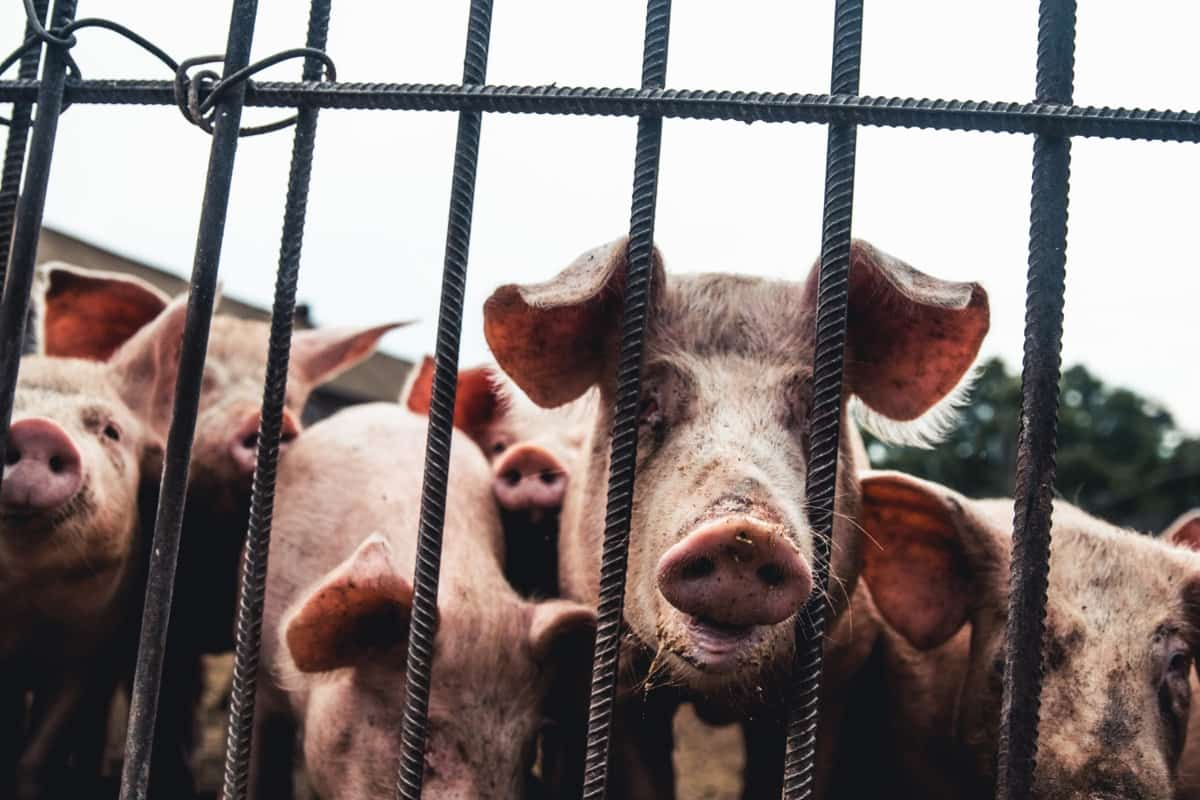
Advantages of Raising Large White Pigs
Hardiness: Large White pigs are highly adaptable to various climates and can handle outdoor and indoor environments. They thrive in classic barnyard settings and are well-suited for pasture-based or fully outdoor systems. They are hardy and can withstand sudden temperature fluctuations.
Meat Producing Abilities: The Large White breed is excellent for meat production. Boars reach a mature weight of around 750-850 lbs, while females average 600-700 lbs. The market favors these pigs for their high-quality pork, including flavorful chops, hams, and especially bacon. They efficiently convert feed into lean meat and have superior carcass quality.
Excellent Reproductive Qualities: Large White sows are renowned for their maternal instincts and are excellent mothers. They have large litter sizes and are exceptional milk producers for their piglets. Their genetics have been used in creating hybrid gilts, making them valuable for crossbreeding projects with other breeds.
Great Pets: Large Whites can also make wonderful pets. They are friendly, enjoy human interaction, and are social animals that thrive when kept with other pigs and livestock. Their amiable nature makes them well-suited for those interested in raising pigs as companion animals.
Disadvantages of Raising Large White Pigs
- Susceptibility to sunburn: Large White pigs have white skin, making them more prone to sunburn and skin damage when exposed to direct sunlight. Providing adequate shade and sun protection is essential to prevent sunburn-related issues.
- Vulnerability to heat stress: Large White pigs may be more susceptible to heat stress due to their size and heavier musculature, especially in hot and humid climates. Proper ventilation and cooling systems are necessary to maintain their well-being during high temperatures.
- Prone to joint and leg issues: Large White pigs’ large size and long legs can make them more prone to joint and leg issues, such as arthritis and lameness. Providing appropriate flooring and ensuring proper nutrition can help mitigate these concerns.
- Higher feed requirements: Large White pigs, being larger, have higher feed requirements compared to smaller pig breeds. This means increased feed costs and management considerations to meet their nutritional needs.
- Limited outdoor adaptability: While Large Whites are adaptable, they may thrive less well in full outdoor or extensive systems compared to breeds specifically developed for such environments.
In case you missed it: Wessex Pig Facts: Origin, Size, Physical Characteristics, Pros, and Cons
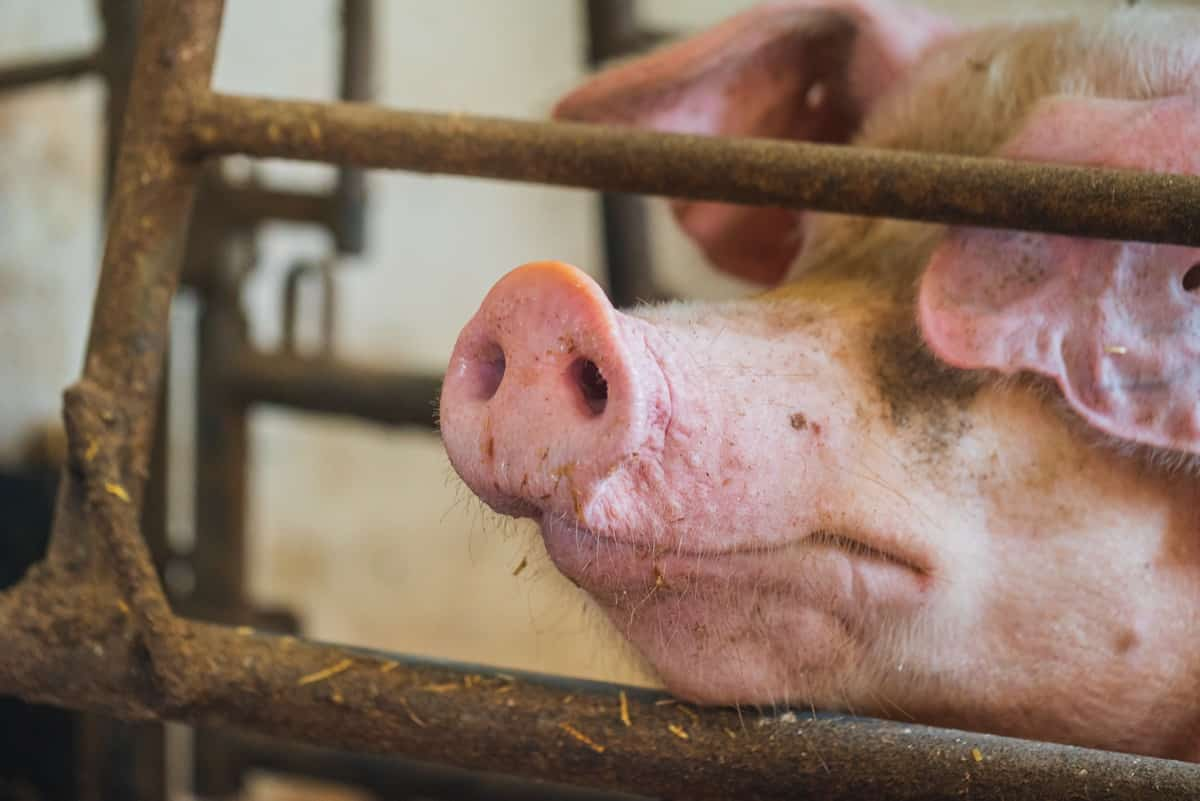
Unique Features of the Large White Pig Breed
- Distinctive Appearance: The Large White pig breed has a characteristic all-white coat or skin color, which sets it apart from many other pig breeds. This pure white appearance is visually striking and easily recognizable.
- Prick Ears: Large White pigs have distinctive prick ears, which stand erect and add to their unique appearance. These ears are medium-sized and remain upright, giving the pig good auditory capabilities.
- Efficient Feed Conversion: Large White pigs are known for their exceptional feed conversion efficiency. They can convert feed into weight gain at a high rate, efficiently utilizing resources and reducing overall feed costs.
- Excellent Bacon Production: Large Whites are highly regarded for their bacon production due to their long body and minimal fat deposition. They produce lean and flavorful bacon, making them a favored choice for enthusiasts.
- Prolific Breeding: Large White sows exhibit excellent reproductive qualities, with large litter sizes and good maternal instincts. They are prolific breeders, contributing to the breed’s popularity and usefulness in commercial pig farming.
- Temperament: Large White pigs are generally known for their docile and friendly temperament. They are often easy to handle and work with, making them suitable for various farming systems and environments.
Large White Pig Breed Traits and Temperament
- Docile Nature: The Large White pig breed is known for its generally docile and calm temperament. They are typically easy to handle and work with, making them suitable for various farming systems.
- Friendly and Curious: Large Whites often exhibit a friendly and curious nature. They tend to be inquisitive and interested in their surroundings, making them enjoy interacting.
- Social Animals: Large Whites are social animals that thrive when kept with other pigs and livestock. They enjoy companionship and being part of a group.
- Adaptability: Large White pigs are adaptable to different environments and management systems. They can adjust well to outdoor and indoor settings, making them versatile for various farming operations.
- Good Maternal Instincts: Large White sows have good maternal instincts and are known for being attentive and caring mothers to their piglets.
- Gentle and Trusting: Large White pigs often display a gentle demeanor and can develop trust with their caretakers when handled properly.
In case you missed it: Large Black Pig Facts: Origin, Size, Physical Characteristics, Pros, and Cons
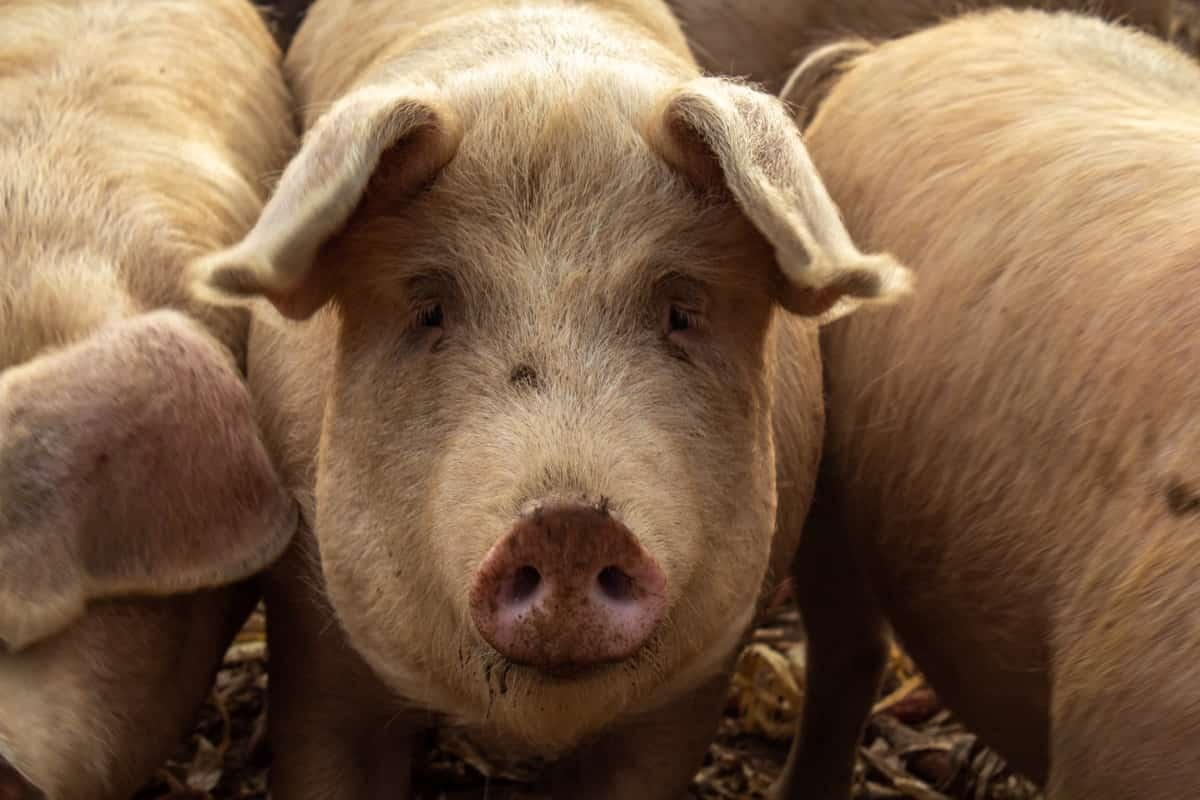
Large White Pig Housing, Feeding, and Caring
Housing: Providing a comfortable housing system is crucial for the health and well-being of Large White pigs. Ensure proper ventilation and adequate lighting inside the house. Allocate separate rooms for breeding boars, pregnant sows, and nursing sows. Create a highly comfortable environment for the pigs to thrive.
Feeding: Feeding high-quality and nutritious food is vital for the success of commercial pig farming. Commercial pig feed is readily available, but you can also prepare their food using oats, grains, maize, wheat, rice, and sorghum. Ensure clean and fresh water is always available for the pigs.
Breeding: Large White pigs are naturally good breeders. Sows have a heat period of 2 to 3 days, and a lactating sow can be bred again 2-10 days after weaning. The gestation period is around 115 days, and a sow can give birth to 11-12 piglets twice a year.
Caring: Pigs require less care compared to other farm animals. Maintain a hygienic environment inside the housing to prevent health hazards and diseases. Provide nutritious food, clean water, and regularly monitor their health.
Uses: The Large White is a highly popular breed for meat production worldwide. It is widely used in crossbreeding for intensive pig farming, contributing to uniformity in meat production on a large scale.
Large White Pig Growth Rate and Maturity
- Growth Rate: Large White pigs are known for their rapid growth rate. They can efficiently convert feed into weight gain, making them an economically valuable meat-producing breed.
- Fast Maturity: Large White pigs reach maturity relatively quickly. Boars typically reach maturity around 8-10 months, while sows reach maturity around 7-9 months.
- Weight Gain: These pigs have the potential to attain significant weight during their growth phase. Boars can reach weights of 300-450 kg (660-990 lbs), while mature sows generally weigh between 250-350 kg (550–770 lbs).
- Early Market Readiness: Due to their fast growth rate and efficient feed conversion, Large White pigs can be ready for market at an earlier age compared to some other pig breeds.
- High Growth Potential: With proper nutrition and management, Large Whites can achieve substantial weight gain in a relatively short period, making them suitable for commercial pig farming operations focused on efficient meat production.
Large White Pig Meat Quality and Flavor
The meat quality of Large White pigs is highly regarded in the industry. They produce lean meat with excellent texture and tenderness. The meat has a good ratio of lean to fat, making it suitable for various culinary preparations. Large White pork is known for its juiciness and flavorful taste, making it popular among consumers. The breed’s efficient feed conversion and muscle development contribute to the desirable meat qualities, making it a preferred choice for meat production.
In case you missed it: Hampshire Pig Facts: Origin, Size, Physical Characteristics, Pros, and Cons
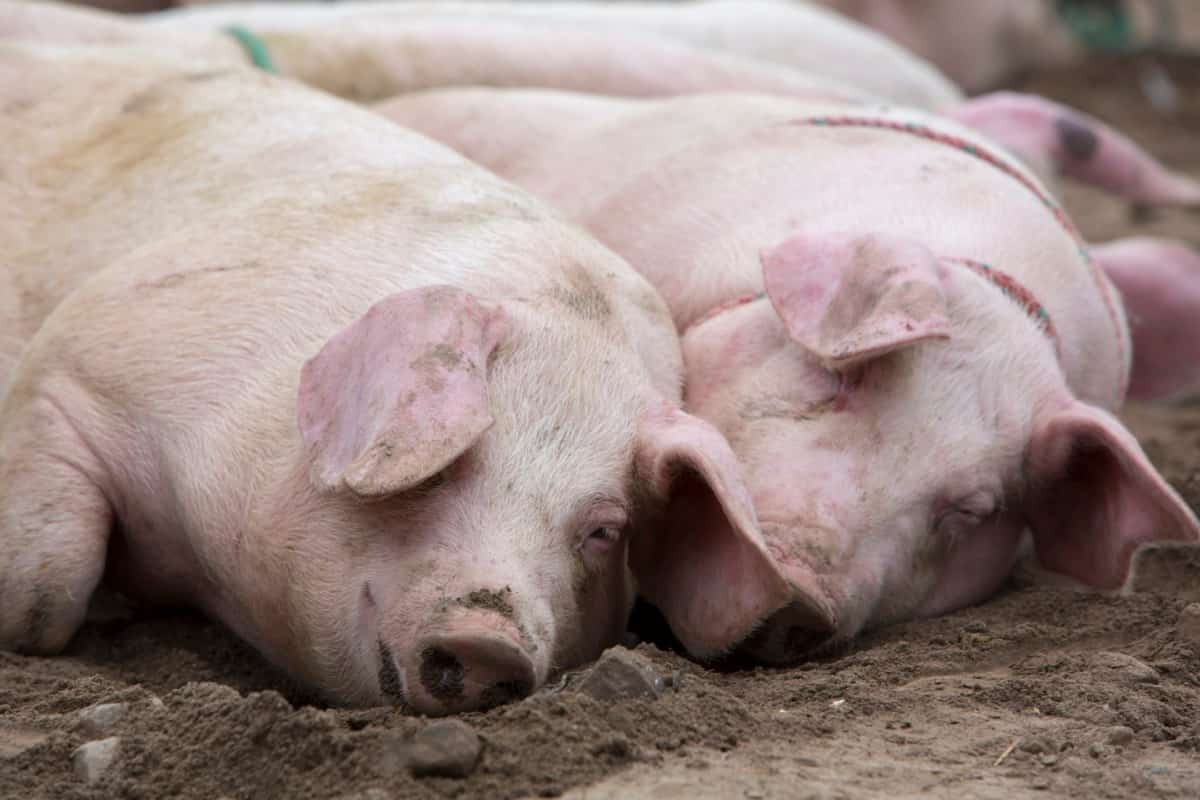
Large White Pig Breeding and Reproduction
- Breeding Ease: Large White pigs are naturally good breeders with no significant reproductive challenges. They have a high fertility rate and can easily produce litters of piglets.
- Heat Period: The heat period of a sow, which is the time when she is receptive to mating, typically lasts 2 to 3 days.
- Gestation Period: The gestation period for Large White pigs is around 115 days, during which the sow carries the developing piglets.
- Litter Size: Sows of the Large White breed are known for their large litter size. The average litter size is 11-12 piglets/litter. Sows are milky and make good mothers.
- Reproductive Frequency: After weaning a litter, a lactating sow can become ready for breeding again within 2-10 days, allowing for multiple litters per year.
- Crossbreeding Potential: Large White pigs are often used in crossbreeding programs due to their desirable traits and genetics, which can improve the characteristics of other pig breeds.
Conclusion
Large White Pig is a British breed with a rich history originating from Yorkshire. It is known for its large size, lean physique, and excellent meat quality. While it offers growth rate and reproduction advantages, considerations include housing requirements and potential health issues.
- Types of Pesticides Used in Agriculture: A Beginner’s Guide
- Economical Aquaculture: A Guide to Low-Budget Fish Farming
- 15 Common Planting Errors That Can Doom Your Fruit Trees
- How to Make Houseplants Bushy: Effective Tips and Ideas
- Innovative Strategies for Boosting Coconut Pollination and Yield
- Pollination Strategies for Maximum Pumpkin Yield
- The Complete Guide to Chicken Fattening: Strategies for Maximum Growth
- Natural Solutions for Tulip Problems: 100% Effective Remedies for Leaf and Bulb-Related Issues
- Revolutionizing Citrus Preservation: Towards a Healthier, Greener Future
- Natural Solutions for Peony Leaf and Flower Problems: 100% Effective Remedies
- Maximizing Profits with Avocado Contract Farming in India: A Comprehensive Guide
- Natural Solutions for Hydrangea Problems: 100% Effective Remedies for Leaf and Flowers
- The Ultimate Guide to Choosing the Perfect Foliage Friend: Bringing Life Indoors
- From Sunlight to Sustainability: 15 Ways to Use Solar Technology in Agriculture
- The Ultimate Guide to Dong Tao Chicken: Exploring from History to Raising
- The Eco-Friendly Makeover: How to Convert Your Unused Swimming Pool into a Fish Pond
- Mastering the Art of Delaware Chicken Farming: Essentials for Healthy Backyard Flocks
- 20 Best Homemade Fertilizers for Money Plant: DIY Recipes and Application Methods
- How to Craft a Comprehensive Free-Range Chicken Farming Business Plan
- Brighten Your Flock: Raising Easter Egger Chickens for Beauty and Bounty
- How to Optimize Your Poultry Egg Farm Business Plan with These Strategies
- Subsidy for Spirulina Cultivation: How Indian Government Schemes Encouraging Spirulina Farmers
- Ultimate Guide to Raising Dominique Chickens: Breeding, Feeding, Egg-Production, and Care
- Mastering the Art of Raising Jersey Giant Chickens: Care, Feeding, and More
- Ultimate Guide to Raising Legbar Chickens: Breeding, Farming Practices, Diet, Egg-Production
- How to Raise Welsummer Chickens: A Comprehensive Guide for Beginners
- How to Protect Indoor Plants in Winter: A Comprehensive Guide
- Ultimate Guide to Grow Bag Gardening: Tips, Tricks, and Planting Ideas for Urban Gardeners
- Guide to Lotus Cultivation: How to Propagate, Plant, Grow, Care, Cost, and Profit
- Agriculture Drone Subsidy Scheme: Government Kisan Subsidy, License, and How to Apply Online
- Ultimate Guide to Raising Araucana Chickens: Breed Profile, Farming Economics, Diet, and Care
- Bringing Hydroponics to Classroom: Importance, Benefits of Learning for School Students
- Ultimate Guide to Raising Polish Chickens: Breed Profile, Farming Economics, Diet, and Care
- Ultimate Guide to Raising Australorp Chickens: Profile, Farming Economics, Egg Production, Diet, and Care
- Silkie Chicken Farming: Raising Practices, Varieties, Egg Production, Diet, and Care
- Sussex Chicken Farming: Raising Practices, Varieties, Egg Production, Diet and Care